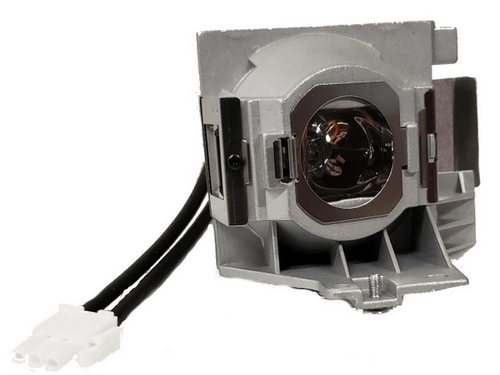A few months ago, I was watching a program on my Optoma HD800 and I noticed that the usually darkly lit show was more darkly lit than normal. After the show I decided my lamp was too dim. Being that I have connections in the ‘biz’, I was able to get a new lamp pretty easily a few days later. When I went to put it in, my wife casually asked,” Could you get a brighter lamp instead of that one?”. I told her the short answer which is ,”No, the brightness is set by the factory” and went on my way. Her question was reasonable and it stuck with me.
I happened to mention it to one of our Customer Service reps who told me, “I hear that a lot.” – “Customers ask if they can get a brighter lamp with higher watts or more lumens”. I can’t say I was surprised to hear it. We learned back when Incandescent bulbs were the norm , that we could buy a 100Watt bulb instead of a 60Watt bulb if we wanted our kitchen brighter. As long as the socket didnt melt, you could really cram anything that would light into the lamp and get a lot of light.
Then with projectors you hear that the lamp needs to be changed and the same logic makes sense. If the bulb for my HD800 says its a 300Watt, then why can’t I buy another that is 400W and get a brighter picture?
Simple answer is that you can’t.
Those who have read this blog in the past knows that I don’t stop here with a simple answer.
Anyone who says you can use a higher wattage bulb for a brighter image isn’t giving you the proper information and could lead to a damaged TV or Projector.
Lets dive into how brightness is rated in lamps, ALL lamps.
Old bulbs used to list their wattage. At the time, it was our only reference.
Wattage is not a rating of brightness, it is a rating of power required to run the bulb. To get extra technical, wattage is a result of Current multiplied by Voltage or P=IV. The average US house has a voltage of 110 volts(anywhere from 105-125v). That means the old 100Watt incandescent bulb used 110volts to heat up its filament and create light.
That gives us two of the numbers. 100(watts)=I(amps) x 110(volts).
100/110=I , I=0.91 amps(0.909090909090909)
With that simple math we now know the power needed but none of that gives us a quantifiable brightness amount. We essentially ‘knew’ that a 100W bulb was brighter than a 60W.
This is where Lux and Lumens come into play. Lux is a true measure of light. One lux is the equivalent of 1 lit candle or 1 candle power. I prefer Lux myself as its an actual unit of light. Lumens is an average of Lux. Lumen is also known as luminous flux. I know that makes very little sense.
If you want to read up on the specifics of Lumens such as how they are calculated via Steradians, there is a nice article in Wikipedia.
For our explanation I am going to simplify it by saying Lumens are essentially a measurement of perceived brightness at your eyes. Where as Lux is a measurement of the light as it is emitted directly from the bulb, Lumens ignore the light components that are not seen, such as Infrared and Ultraviolet light. The light emitted from the bulb has many more optical components than the light that is reflected off the screen, but when you are watching a movie, that is all that matters.
One lumen would be the average measurement of 1 lux over a one square meter white surface that is projected from one meter away. The actual lux over that square meter will vary from less than one Lux to over one Lux. Once its averaged, the final number can be interpreted as One Lumen. That is the light output that your eyes see. In my opinion that is the most important part. If the specs say the projector is 10,000 Lumen and it looks dim in comparison to a 5,000 lumen, the the specs mean nothing.
Lumens are partially dictated by the optics inside the projector. The more color filtering and lenses you have inside, the more the amount of Lumens are affected.
This is why many projectors who use the same bulb have varying Lumen ratings. It also starts to explain why there isn’t a brighter lamp you can purchase to make your Projector or Rear Projection TV brighter.
Your TV or Projector lamp is not an incandescent bulb. It is an Arc-Lamp. That means there is no ‘filament’ in the classic sense. There are 2 electrical contacts inside the glass globe that sustain a spark, or ‘Arc’ that excite the gas mix inside to emit the photons that make the light. To make and sustain that arc properly, the device uses a separate power supply called a ballast to drive that lamp. The ballast has a set power output that is only going to run at the designed level. Putting a larger wattage arc lamp in, will only run at the ballasts output and no higher.
Some models use the same lamp but have a different ballast rating that will only drive the lamp so much.
For instance, if I installed a 350W bulb in place of my 300W bulb my picture would only be as bright as the 300W bulb. That is because the ballast inside that runs the lamp, is designed for that particular projector. When the manufacturer designs the projector, they have to decide on the balance between Lumens and Picture quality. The brighter the image, the lower the possible contrast ratio. They tend to find a very reasonable balance between the two.
When the lamp is shining its light in your TV or Projector, the light is passing through numerous light filters, lenses and mirrors. These also affect the Lumen output.
Lumens are a convenient way to compare how well a projector will work in your viewing area or against other projectors. If you are using a basement as a home theater, the Lumen output is not as important as it would be in a family room with windows.
Projecting an image long distances(an auditorium) requires high Lumens. The moisture and suspended dust particles in the air can block a significant amount of light. Next time you are in the movie theater, look at the dust floating in the light beam outside the projection booth. Every fleck of dust is preventing a tiny bit of light from reaching the screen to reflect into your eyes.
All projectors and rear projection TV’s(regardless of the display technology) are designed with a particular type of bulb and housing in mind. The manufacturers determine the best balance between image quality and brightness for the price point.
When purchasing a new lamp for your existing Projector or TV, know that Pureland Supply uses Original Brand Bulbs in our housings to give you the same brightness and image quality that the manufacturer intended.

